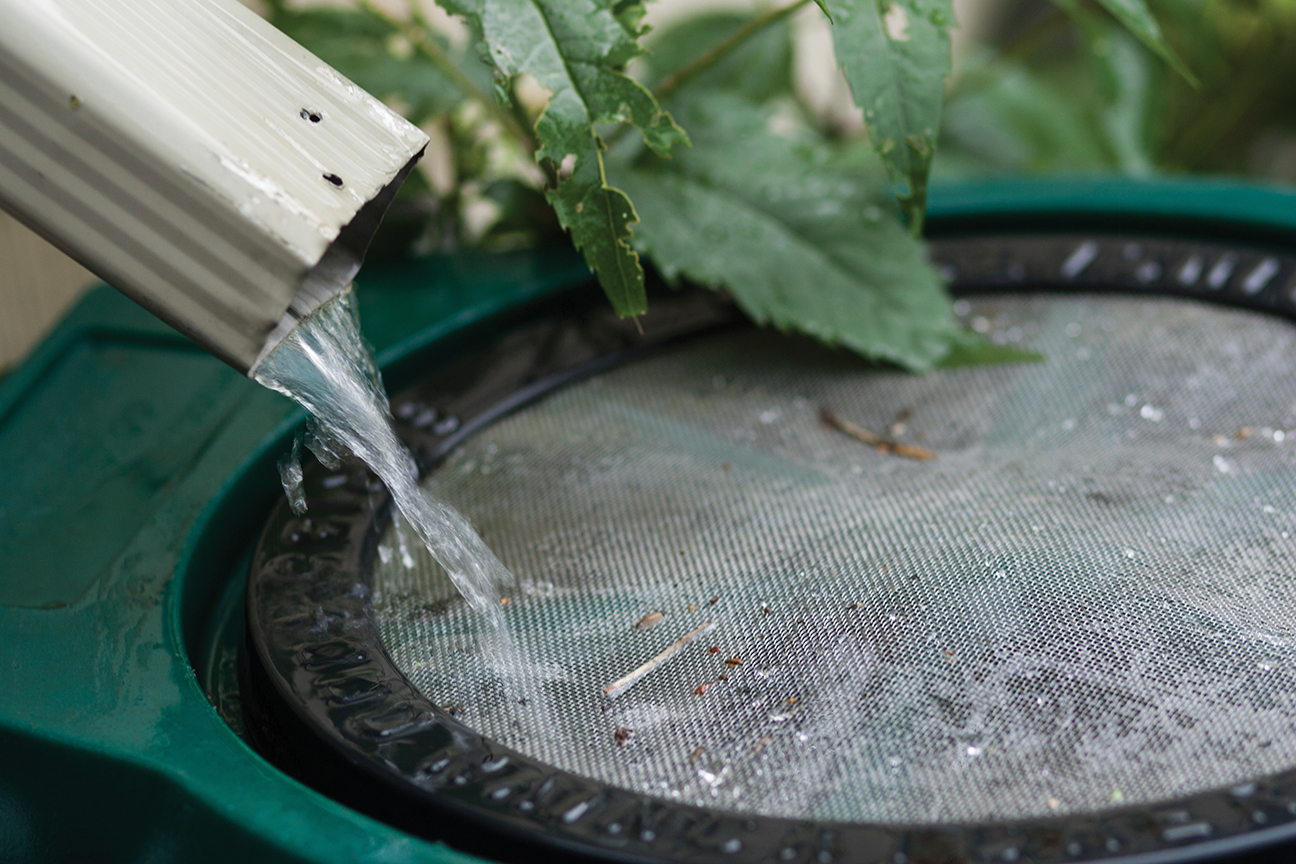
Rain barrels: a how to guide for a Healthy Yard
Brought to you by Gardening at the U of S, the City of Saskatoon, the Saskatoon Food Bank and Learning Center Garden Patch, and the Saskatchewan Waste Reduction Council Compost Coaches
Rain Barrels
Rain barrels collect rainwater, provide a free source of water for your yard, and reduce the amount of stormwater runoff that enters the South Saskatchewan River. During an average year in Saskatoon, a 1000 square foot roof will capture enough rainwater to fill a 55-gallon rain barrel 110-125 times during the gardening season!
Benefits of Using Naturally Available Water
• Your plants and soil will be healthier if you use untreated water (rainwater).
• You will reduce your water bill costs.
• Using rainwater reduces your need for treated water, which puts less pressure on the water treatment plant and reduces greenhouse gas emissions.
• Washing your car with rainwater doesn’t leave soft water spots behind!
And remember, use only the amount of water you need to prevent water wastage and unnecessary run off into the storm drains.
Choosing a Rain Barrel
Regardless of size, colour, and material, a barrel should be sealed and equipped with
• an overflow mechanism to redirect water to plants or another barrel once full (ensure the overflow discharges water at least 6 feet away from any building foundation),
• a drain (tap/spigot) near the bottom to attach to a garden hose, drip irrigation system, or to fill a watering can, and
• a screen to cover the lid and overflow mechanism. This keeps debris from entering the barrel and prevents mosquitoes from laying eggs in standing water.
Installation Tips
• Place the rain barrel on a stable, secure surface, approximately 10 cm from your house or garage.
• Elevate the rain barrel so gravity will help move water through a hose and allow enough space to fit a watering can. A 2% downward slope (minimum) from your barrel’s tap to your hose nozzle will ensure water will flow easily. The larger the change in elevation, the more quickly water will flow.
• Redirect a downspout from your rain gutter to the top of your rain barrel. When it rains, water from your eaves will flow into your barrel.
• You can easily personalize or disguise your rain barrel with plastic-friendly paints or lattice screening.
Safety Considerations
• Water from your rain barrel is not safe to drink!
• Ensure your barrel has a secure lid to prevent any accidents with pets or small children.
• Your rain barrel will be extremely heavy when full. Do not attempt to move it when it contains water!
Mosquito Control
There are many ways to deal with mosquitoes. Your screen should prevent mosquitoes from breeding so ensure it is intact. If you do have a problem, the simplest solution is to empty your barrel. This will kill the larvae.
• Mosquito dunks can also be added to your rain barrel. This organic control method utilizes bacteria that kills mosquito larvae but is harmless to people, pets, and plants.
• Adding a couple of tablespoons of food grade (cooking) oil to your rain barrel will leave a slight film on top of the water that will prohibit mosquitoes from nesting.
Rain Barrel Maintenance
Keep the barrel free of debris and rinse as needed to remove any algae growth.
How Else Can I Reduce My Water Use?
• Mulch is the single best way to manage your garden ecosystem. Not only does is reduce your need for watering and lower evaporation, but it also keeps down weeds and protects your plants from temperature fluctuations. To learn more, view our Mulch and More: How-To Guide.
• Plant native and drought-tolerant plants that require less water. To learn more, view our Low-Water Gardening: A How-To Guide.
• If your lawn is established, water it deeply, but no more than once a week. To learn more, view our Lawns: A How-To Guide.
• See the City of Saskatoon’s Be Water Wise tips on saskatoon.ca/bewaterwise
When Cold Weather Arrives
• Completely drain the rain barrel of water, ideally onto your trees or shrubs, as this will help their roots overwinter.
• Remove taps and overflow mechanism if they are not permanently affixed.
• Rinse out rain barrel.
• Store barrel upside down or place in a protected area.

